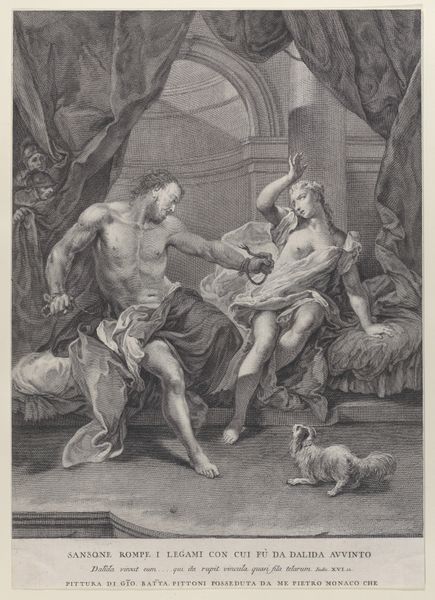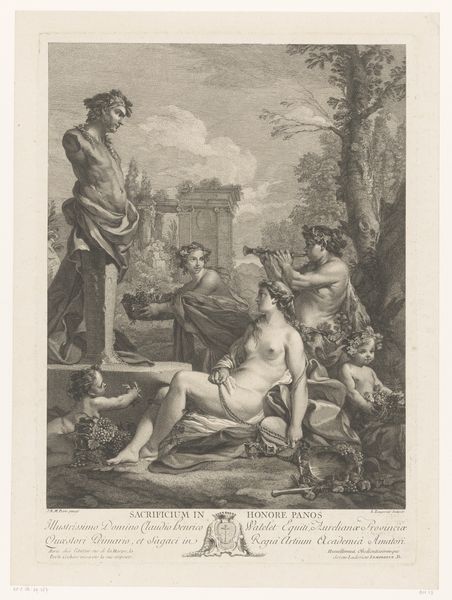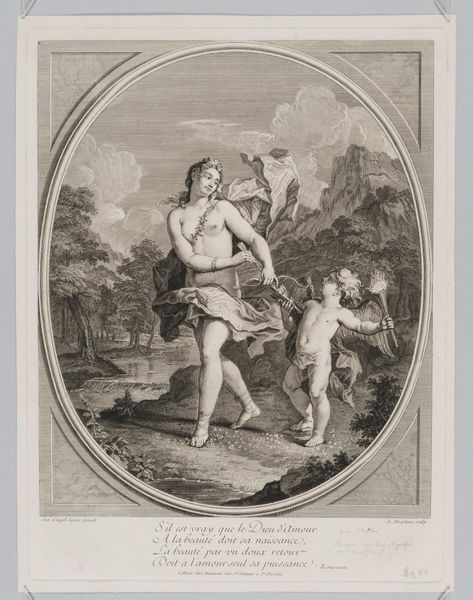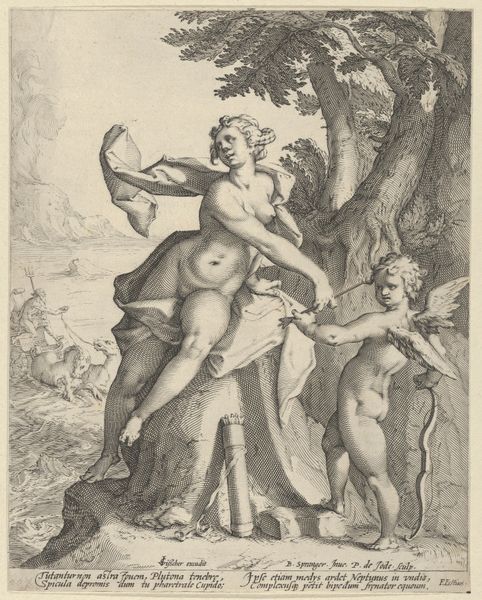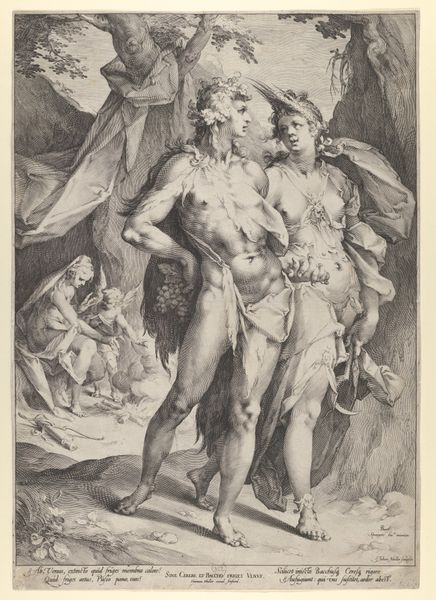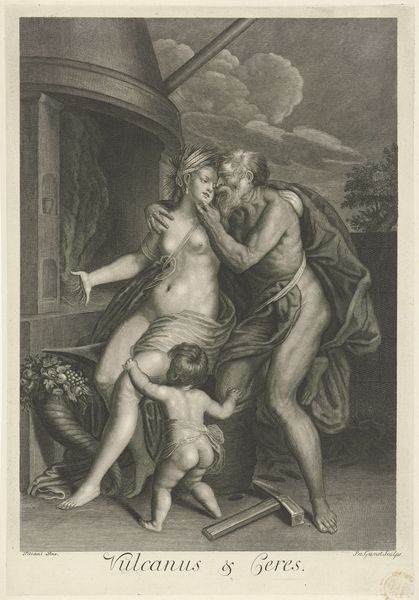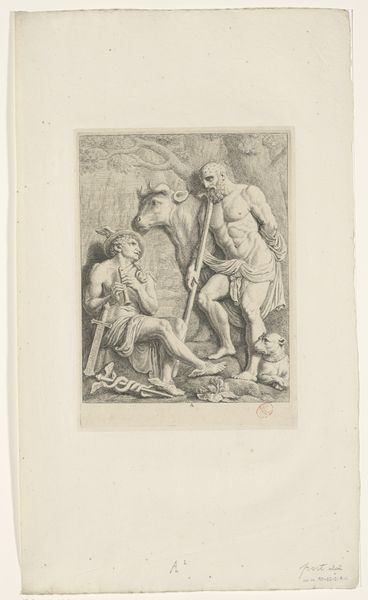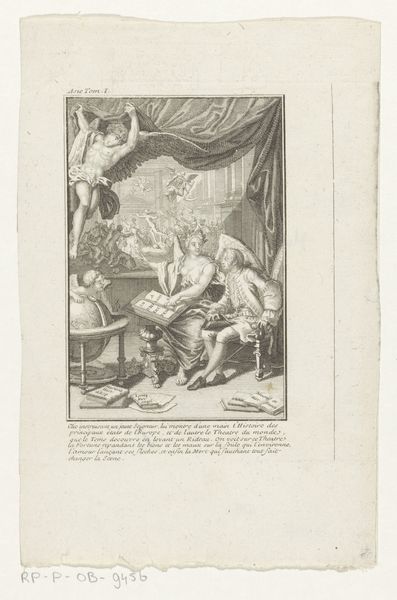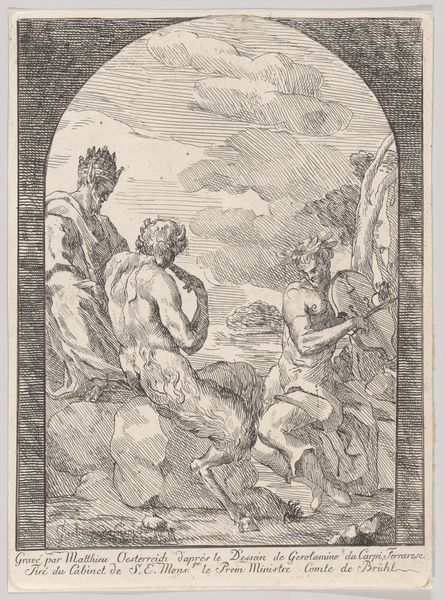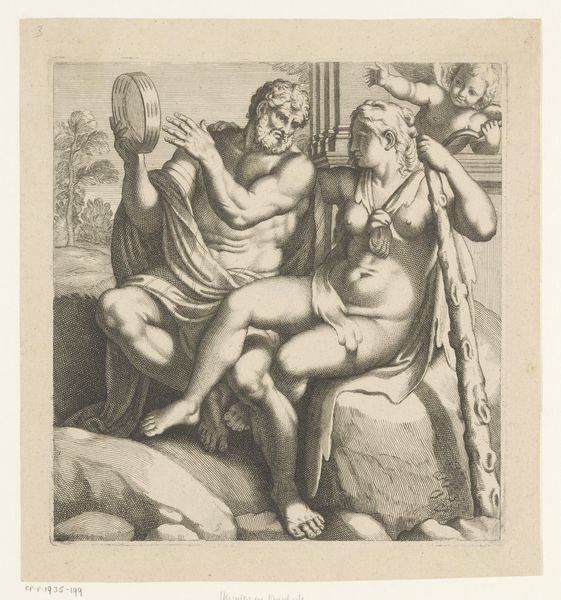
Dimensions: height 378 mm, width 274 mm
Copyright: Rijks Museum: Open Domain
Curator: Gazing at this print, "Pan en Syrinx," dating back to 1764 and attributed to Valentin Daniel Preissler, one immediately feels a sense of hushed anticipation, doesn’t one? Editor: It certainly possesses a quiet, almost dreamlike quality. The soft shading and delicate lines lend it an ethereal air. The eroticism feels very different from our time. It's less… obvious. Curator: Indeed. What we have here is an engraving based on a painting by another artist, Adrian van der Werff. The composition, see, draws us into a pivotal moment in the myth. Pan, identifiable by the pipes, is pursuing the nymph Syrinx. Her pursed lips create a line of desire. She is almost… unaware. Editor: Van der Werff, interestingly, frequently depicted scenes from mythology, right? It’s a Baroque interpretation but softened somewhat – the sensuality is evident, particularly in the rendering of the figures, but the overall atmosphere seems less dramatic than, say, a Rubens. Curator: Exactly. Preissler, in translating van der Werff’s vision to print, further refines it. Notice the almost sculptural treatment of the bodies, illuminated against the dark, cavernous background? And the placement of that cupid. It is if she were waiting to make the right movement at the right moment, like a stage play waiting to begin. It adds another layer of interpretive potential, wouldn't you say? The whole composition funnels our vision from dark to light. Editor: Absolutely. The cupid introducing a kind of… innocence or mischievousness, perhaps. What strikes me, though, is the contrast between the detailed figures and the relatively indistinct landscape. It throws their interaction into sharper relief. Everything fades except for that immediate interaction between nymph, demigod, and messenger. The foreground is so detailed it is rendered a character unto itself. Curator: It speaks to a moment frozen in time, really. But a loaded moment—thick with desire, pursuit, and imminent transformation as the nymph will transform herself into reeds so she can be saved. I suppose it leaves you to ponder, doesn't it? What's left unsaid. Editor: Very much so. There’s a poignant stillness—the kind that precedes either breathless escape or profound understanding. It leaves a long echoing note in your memory. Curator: Precisely. An evocative slice of a classical story, expertly captured and open to an ongoing play of interpretations.
Comments
No comments
Be the first to comment and join the conversation on the ultimate creative platform.
